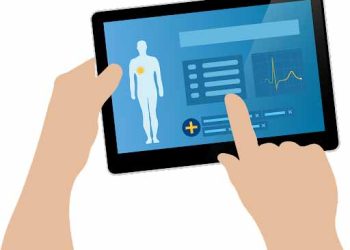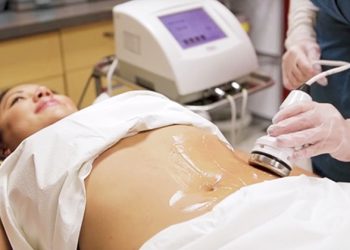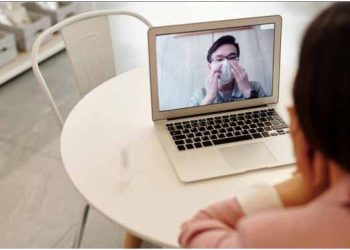In some situations, it may be necessary for individuals recovering from injuries to combine massage with physical therapy.
Physical therapy and massage can be combined to improve care and aid recovery. Both techniques help patients move more freely and effectively use their muscles by reducing discomfort and inflammation. In order to reduce the tension that comes with having chronic pain or an accident, massage therapy can be a helpful addition to physical therapy.
Physical therapy and massage therapy can work together to create a holistic, all-encompassing treatment that offers both immediate and long-term advantages.
How does physical therapy work?
Physical therapy, commonly referred to as physiotherapy, helps patients move more freely and comfortably by restoring and promoting the health of their muscles and joints.
A physical therapist administers physical therapyto:
- Manage pain from long-term conditions like diabetes, arthritis, and heart disease;
- Restore bladder and pelvic health and function;
- Prevent and facilitate recovery from a sports injury.
- Relieve pain;
- Improve mobility and joint function;
- Improve balance and coordination.
In addition to manual manipulation, physical therapy treatments may also include supplemental therapies like light therapy, hot and cold therapy, hydrotherapy, electrical stimulation for nerve pain, and muscular engagement.
Physical therapy and massage therapy are different entities.Both physical therapy and massage treatment involve manual manipulation to alleviate bodily inflammation. Physical therapy, however, concentrates on the complete musculoskeletal system, whereas massage treatment targets the body’s soft tissues, tendons, muscles, and fascia.
The fact that physical therapy is often utilised for specific illnesses that need rehabilitation further sets it apart from massage treatment. Massage therapy is preferred as a sort of maintenance therapy that can be used in conjunction with physical therapy for the best outcomes.
Are you working as a massage therapist?
One of the oldest forms of therapy, massage treatment, can help with a variety of conditions. Each form of massage, from Shiatsu to deep tissue, has its own special advantages. However, the possibility that a treatment will fail still exists. Although giving a massage is generally low risk for experts like you, it could have negative consequences on a client or possibly exacerbate a pre-existing ailment. It is for this reason that you are advised to fully research massage insurance.
The advantages of including massage treatment in physical therapy
Improves range of motion and flexibility
Your soft tissues’ capacity will determine how adaptable you are (the muscles, tendons and connective tissues). You could find it difficult to bend over, reach for objects, throw a ball, or get a complete range of motion when weightlifting if these areas are tight or inflamed.
Range of motion and flexibility go hand in hand. Usually, restricted mobility results from damaged supporting muscles or inadequate joint function.
By stretching and relaxing the muscular fibres, physical treatment and massage therapy can be used in conjunction to increase flexibility.
Boosts posture
As it aids in realigning your body, massage has several positive effects on posture. Muscles that are overused or weak might result from modern lifestyle habits like texting, using computers for extended amounts of time, or sitting down for long periods of time.
Numerous health problems, such as headaches, neck, shoulder, and back pain, as well as an unsteady gait when walking or running, can be brought on by poor posture. The body can be brought back into balance by manipulating overactive or underused muscles with the help of both massage treatment and physical therapy.
Eliminates scar tissue
The body creates scar tissue during the process of recovering from an injury. These adhesions may result in discomfort, limited range of motion, and a persistent tightness, itching, or swelling sensation. Injury recurrence may happen if scar tissue is not addressed, which could cause a significant delay in recovery.
Both a massage therapist and a physical therapist can use various instruments and methods to target and remove adhesions. Regular therapy can help scar tissue disappear, enhancing mobility and minimising pain.
Boosts circulation
Your muscles will recover more quickly the better your circulation is. That’s because the muscles receive oxygen and nutrients through healthy circulation, which helps reduce stiffness and tension.
Circulation will be significantly enhanced by massage therapy and physical therapy combo. The oxygen-rich blood they require for healing is moved through clogged areas with the aid of massage.
Relaxes muscles
Relaxation of the muscles is one of the main advantages of massage therapy. This may help an injured athlete or someone who is rehabilitating mentally and physically after an injury.
Constant muscle soreness and tension, whether brought on by exercise or an accident, can be bad for one’s physical and mental well-being. By promoting muscular relaxation with a massage, physical therapy can be supported by assisting these strained muscles to unwind.
Soft tissue massage
All of the body’s muscles, tendons, skin, and fibrous tissue are considered soft tissues. Therefore, soft tissue massage aims to help tight, strained, and overworked muscles regain their flexibility and looseness.
Soft tissue massage helps those who present with muscle aches, headaches, tennis elbow, plantar fasciitis, tension, poor posture, and arthritis by utilising a variety of depths, pressures, and durations.
A variety of soft tissue injuries and the referred pain from these injuries can both be treated with active release. ART can be used to alleviate pain and other side effects brought on by soft tissue injuries, much like deep tissue massage.
A physical massage technique called myofascial release helps release tension in the fascia.
The tissue layer that connects the muscles and spine is known as the fascia. In conditions like myofascial pain syndrome, stiff fascia can cause muscles to be constricted, limiting movement and leading to persistent discomfort.
In order to relieve aching muscles, myofascial release uses slow, moderate pressure. Any ridged regions are stretched using manual pressure and manipulation until all tension has been released.
While many people will benefit from a physical therapy or massage therapy regimen on its own, combining the two can aid in a faster and better recovery.
If massage therapy is paired with physical therapy, clients will have access to a wide range of methods and treatments to rebuild strength, ease discomfort, and acquire more functional movement.

















